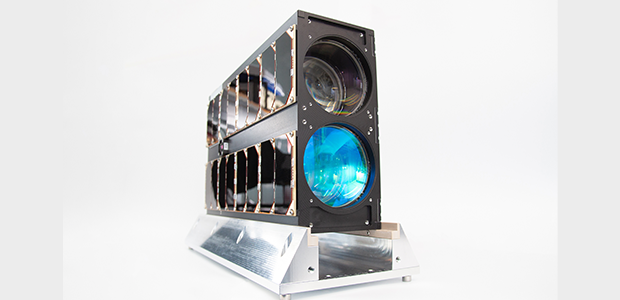
Kuva Space launches its hyperspectral microsatellite Hyperfield-1 with SpaceX
Finnish startup Kuva Space has successfully launched its first commercial microsatellite, Hyperfield-1, as part of SpaceX's Falcon 9 rideshare mission from Vandenberg Space Force Base in California, US.
The satellite has made initial contact, marking the first step in Kuva Space’s ambitious plan to build a large satellite constellation. The company aims to achieve daily Earth observation by 2027 and full global monitoring with 100 satellites by 2030.
Kuva Space is focused on enhancing life on Earth through its AI-driven space technologies. The Hyperfield-1 satellite is equipped with a patented hyperspectral camera, which captures detailed spectral data to identify and analyse Earth’s materials and conditions. This advanced technology enables the company to generate precise insights by distinguishing unique spectral signatures.
Kuva Space’s AI-powered analytics platform processes this proprietary hyperspectral data, integrating it with external data when necessary, to deliver actionable insights within 15 minutes. This capability allows the company to monitor agricultural conditions, forecast crop yields, assess biodiversity, detect water quality issues, and even track illegal maritime activities. By providing near real-time information, Kuva Space helps organisations make informed decisions quickly and efficiently.
As a fully integrated space company, Kuva Space offers a subscription-based insights service, moving beyond the traditional pay-per-use model. With its daily hyperspectral observations and automated AI analytics, the company aims to revolutionise how non-space organisations utilise spaceborne data to implement ESG strategies, enhance security, and optimise resource management.
“Hyperfield-1 launch is a critical milestone for the Kuva Space’s mission. The immense learning the team garnered in the past two years, both on satellite and AI-powered processing pipeline and customer needs, is giving us a firm foundation to build world-class services,” says Jarkko Antila, CEO of Kuva Space. “When the Hyperfield-1 satellite commissioning period ends, we will open early access to a selected group of customers to test, validate, and co-create domain-specific services.”
“Our early access programme will help customers learn firsthand how novel hyperspectral insights can make their business more climate resilient,” he continues.
Organisations have long struggled with the challenges of using satellite data, often finding it either prohibitively expensive or lacking in relevance and accuracy. Kuva Space is addressing these issues by automating its data processing with advanced AI, delivering constantly updated, decision-ready insights where and when they are needed most. This approach enables companies to access timely, accurate, and affordable information, transforming how they utilise satellite data.
What sets Kuva Space apart in the industry is its seamless satellite monitoring system, which can be fine-tuned in orbit to meet specific needs across various applications. This flexibility allows the company to cater to multiple industries simultaneously, providing tailored solutions for diverse requirements. Looking ahead, Kuva Space plans to integrate in-orbit edge computing and Sat-to-Sat communication in its second-generation satellites, enhancing in-orbit processing and speeding up the delivery of analytical insights, particularly for first responders.
“Our AI-powered service production process is put to test for the first time with our proprietary hyperspectral data with the launch of Hyperfield-1. This complex process spans tailored data acquisition, in-orbit data pre-processing, and on-ground processing to produce hypercubes, which will then be automatically translated into industry-specific insights. We anticipate fine-tuning the end-to-end process as we gather more data and learnings during this year,” states Tuomas Tikka, CTO of Kuva Space.
Kuva Space co-developed the camera technology in Hyperfield-1 with VTT Technical Research Centre of Finland. The second satellite, Hyperfield-1B, will be deployed in Q1 2025 as part of the ESA InCubed program. Later in 2025, the second generation of Hyperfields will be launched with enhanced specifications.

